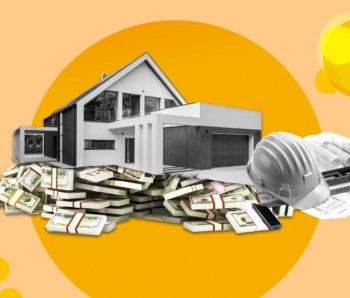When you go to buy a home, your mortgage lender will almost always order a home appraisal.
The purpose? They want to verify the home’s worth. Specifically, they want to be sure it’s worth the money they’re lending you and, most importantly, that they’ll recoup their investment if you default on the loan. Put simply, it’s a risk-mitigating measure.
But what does it mean for you as the buyer? Well, there are two scenarios you could find yourself in.
More for Real Estate Enthusiasts
Scenario 1: Your home appraises at your full offer price
Many times, the home appraisal goes off without a hitch. You make an offer on your dream home, and the appraiser verifies the property is worth what you offered (or more).
In this situation, your lender approves your loan amount without much hassle.
Scenario 2: Your home appraisal comes in low
Other times, the appraisal may come in low, and you could end up with a home appraisal gap — a discrepancy between your offer on the home and what the property is actually worth.
When this happens, your lender will only loan you up to the appraised value.
This leaves you with three options if you want to move forward with the sale. First, you can make up the difference in cash. If it’s only a few thousand dollars and you’ve got a flush savings account, this might be doable. If not, you have two other options.
Your next move would be to renegotiate with the seller. There’s a chance they may be willing to accept a lower offer on the home — especially if they’ve already moved out, bought another property or it’s a buyer’s market and there’s little demand for the property. Your real estate agent can help if you decide to go this route. You can also:
- Offer to split the difference.
- Ask for seller concessions to make up for the increased price.
- Offer free lease-back, letting them stay in the home while they find their new place.
- Change your closing date to a more convenient one for the seller.
Finally, you can also back out of the deal entirely. If you had an appraisal contingency in your sales contract, you could do this without any sort of penalty. If you didn’t have the contingency, you’d have to forfeit your earnest money deposit in order to back out.
One more option
If you have an appraisal gap, there is a fourth, typically less successful path you can take, too. In this one, you’ll either challenge the home appraisal or request a new one.
To challenge the home appraisal, you’d need at least a handful of comparable sales from the area — ones that prove local homes are selling for about what you offered. Your agent can help pull these for you. Just remember, the closer the comps are to your home’s size, style, condition, and offer price, the better.
You can also request a new appraisal from your lender, but you’ll need to pay for it out of pocket. These usually cost upward of $300. Some lenders may not grant this request, so make sure you have a back-up option.











